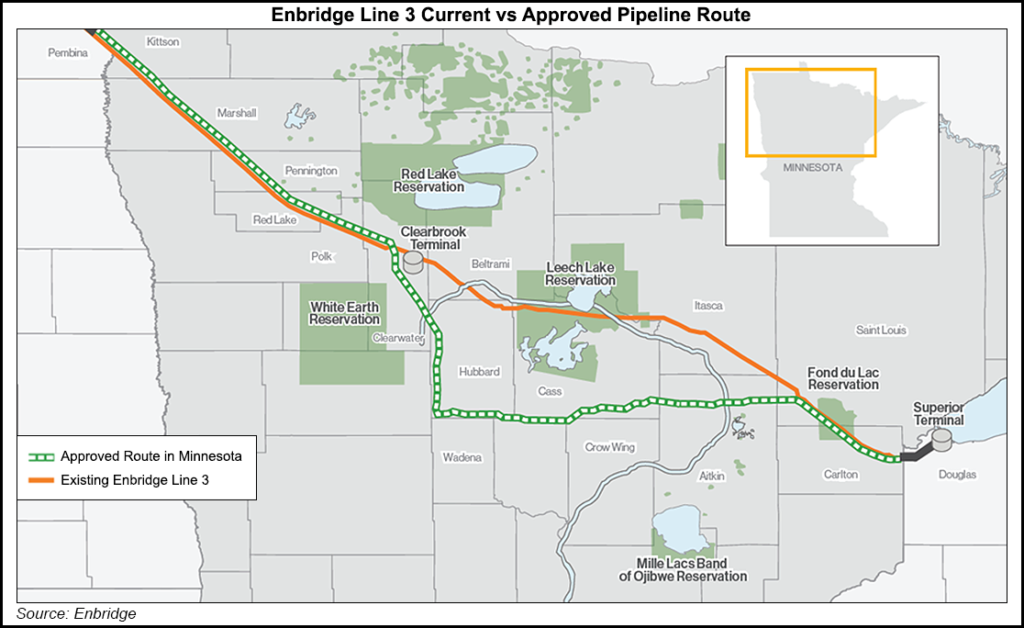Shale Daily | NGI All News Access | Regulatory
Enbridge Line 3 EIS Says Threats to Lake Superior Unlikely
A hotly contested Minnesota leg in a $9 billion Enbridge Inc. Canadian oil export pipeline project took a step forward Monday, when state regulators granted the plan a favorable environmental verdict.

A new environmental impact statement (EIS) by the Minnesota Department of Commerce, ordered last June by the Minnesota Court Of Appeals, found Enbridge’s Line 3 replacement posed no significant threat to the state’s share of the Lake Superior watershed.
Even in a worst case scenario of a 24-hour spill without responses by Enbridge or other emergency crews, the EIS indicated it was “unlikely that any measurable amount of oil would reach Lake Superior.”
The theoretical possibility of lake pollution was the only gap cited by the Minnesota court on an environmental protest lawsuit against previous state approval of the Line 3 project. Issues of greenhouse gas emissions, historic and cultural resources, alternative routes and cumulative effects were properly covered, said the EIS
The new environmental assessment prompted state authorities to establish a brisk Line 3 re-approval schedule, with a deadline of Jan. 16 set for public response. A final version would follow from the Minnesota Department of Commerce, enabling the Minnesota Public Utilities Commission (MPUC) to repeat previous approval votes.
Enbridge called the EIS an important advance and predicted the construction program across the state could begin as early as mid-2020, taking up to nine months.
The project, which is replacing 1960s facilities, is forecast to add 370,000 b/d of capacity for exports to the United States from Canada’s top natural gas user, Alberta thermal oilsands production. Canadian legs in the new Line 3 pipe opened earlier this month.
© 2024 Natural Gas Intelligence. All rights reserved.
ISSN © 2577-9877 | ISSN © 2158-8023 |
